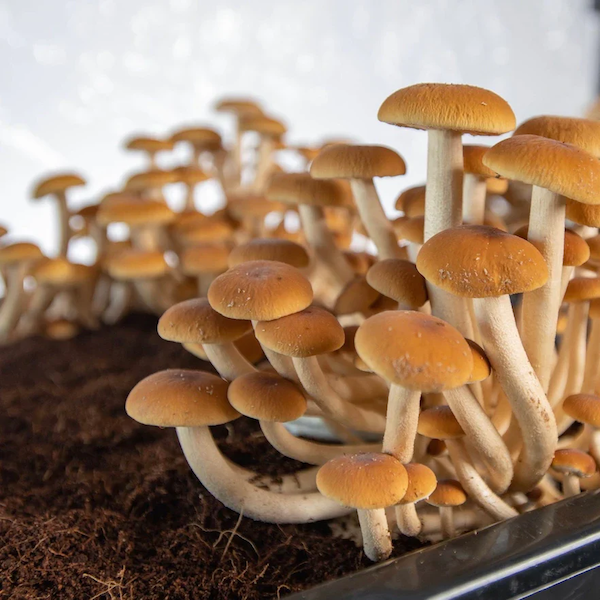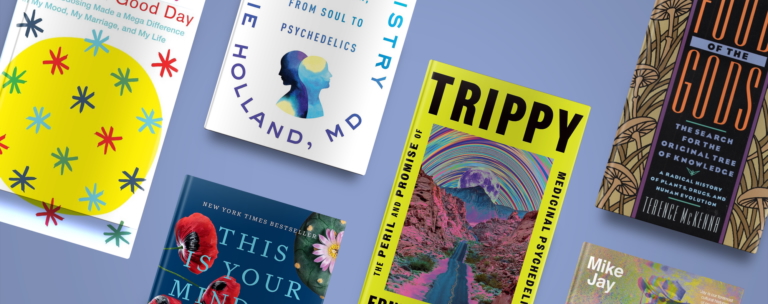Have you ever tried to explain to someone what something smells like? We’ve all tried it, knowing that you can’t fully describe the exact experience of a fragrance with words. So does knowing our sweet spot for microdosing . It is difficult to define or communicate, and uniquely personal to you.
Microdosing is the regular taking of sub-perceptual doses of a psychoactive substance for the purpose of long-term benefits such as improved mood, optimized cognition and increased creativity. In this article we explain how to find your sweet spot for this, so the best experience based on a microdose.


What's the sweet spot?
When it comes to microdosing , the ‘ sweet spot ‘ dosage is different for everyone and can sometimes change over time. Just like when you fall in love, it’s hard to describe. But you will know when you experience it.
To begin with, a microdose is, by definition, one-tenth or even one-twentieth of a macro or recreational dose. Moreover, you use it at intervals of a few days and it is not intended to cause a ‘high’. At the same time, this makes it difficult to determine the ideal minimum effective dose.
The perspective you need is a broader view of the longer term. It is not about direct ‘ effects ‘ but more about the subtle changes and improvements over time.
How do you find your sweet spot?
Finding your unique sweet spot isn’t difficult, but it does require some testing and experimentation . Let’s take psilocybin truffles as an example for this article.
Many start with a dose of 0.5 grams. It is important to always start on a day when you have no other commitments, such as work. This way you can get used to the feeling and fully explore what it does for you.
Suppose the 0.5 gram was not enough for the desired effects. It didn’t quite work for you and you didn’t notice anything different than usual. In that case you can increase the dose on your next microdosing day , for example to 0.75 grams. Consistently keep track of how you feel and write it down, for example, so you don’t forget it.
It may also be that 0.75 grams just too much for you. You then experience anxiety, mild nausea or restlessness. Then you decide to lower the dose again the next microdosing day. The next time you choose 0.65 grams. That’s how you hit the bullseye. You feel great and can easily get into a flow. Then you have found your sweet spot!
The above is of course just one example, but the process always remains the same. Tweak , track, and experiment : until you find your ideal dose. You will use at least once too much. That’s a critical part of the process so you learn where your individual limit is when it comes to microdosing.
But don’t worry, nothing bad will happen and you won’t start ‘tripping’.
How do you know you’ve taken too much?
If you take more than your ideal dose you feel a little nauseous, anxious, restless or even deeply relaxed and sleepy . Many have likened it to an extra cup of coffee. Taking more than you needed leads to a feeling that can last thirty minutes to a few hours.
Do you feel like you’ve taken a little too much? Don’t worry, try eating something, lying down, taking a walk, keeping a journal, making art or listening to music. You will notice that it makes you calmer.
It’s good that you’re experimenting, because that’s the only way you can discover what your sweet spot is. Embrace the effects, and accept that you are also taking too much. You then know where the limit is, and that’s a nice feeling. You can stay below that limit next time.
Your sweet spot
Now you the technical details to find your sweet spot, we will look at some statistics that you can take into account during your journey of discovery. Below we examine some of the most important metrics to look out for and help you determine if microdosing is working for you.
How you feel is largely determined by your daily habits. It’s about how you feel in your body, and in relationships with others. Based on these pillars, you can measure the effects of microdosing and whether it works for you as you would like.
How your habits change daily
What you value most is best reflected in your calendar and your bank statements. That’s what you do every day, so what you probably find important.
If we had to analyze a pie chart that shows us how we spend our days, what would we notice about ourselves? Would we be confronted with the habits we want to quit one day?
We may become overwhelmed with the habits we have yet to implement. A habit is not only what we do, but also how we do it. How do we spend the first 90 minutes after waking up? What is our bedtime routine? What do we drink or eat to calm ourselves down?
What habit do we use to focus on the day ahead? How do we deal with time management? What do we do on autopilot every day?
For example, our customers tell us that they no longer feel the need to smoke. The craving has (almost) disappeared. Instead, they finally started running in the morning, keep it up and live healthier lives. Others, for example, indicate that they show much less compulsive behavior, so they don’t have to check their phone all the time.
A study was published last year reporting that microdosing psychedelics such as LSD and psilocybin mushrooms was associated with spontaneous improvements in meditative practice (49% of participants), exercise (49%), eating habits (36%) and sleep ( 29%); and with reduced use of caffeine (44%), alcohol (42%), and tobacco (21%).
This shows us that microdosing has the potential to be an excellent catalyst for letting go of ineffective habits and replacing them with habits that are much more rewarding.
How you feel
How we feel in our bodies largely determines our short and long term actions. When we feel anxious or overwhelmed, we are more likely to do whatever it takes to immediately feel better (self-soothing and self-medicating).
If we don’t sleep well or experience creative blocks, unresolved problems can significantly negatively affect our quality of life in the long run. Microdosing seems to be able to help with problems such as depression, ADHD, OCD, insomnia, cognitive capacity and creative output thanks to its neuroplastic properties.
Dealing with issues like sleep quality, compulsive behaviors, mood imbalances and productivity can literally define our day and, moreover, our lives. Improvements in these areas mean that the other tactics you used before are no longer necessary, allowing you to solve the problem at the source.
When you feel better, you eat healthier, you are more enthusiastic to exercise and you experience more energy to live your life the way you want.
What relationships tell you
Our relationships at home, at work, and in the world are often good mirrors of our state of mind. Thousands of studies have been conducted over the past 60 years proving the causal relationship between quality relationships and optimal physical health.
How do we respond to the affection of a loved one? How often do we experience anger? How often are we there for the kids? Do we feel a paralyzing tension when we speak in public? Does our spouse or partner feel heard and understood by us?
The old saying is, ” Happy wife , happy life,” but in fact, this can be said about any relationship that matters to us. Whether or not we show up, how we get there, how open and available and present we are can make or break a personal relationship, just like a professional one.
Our ability to give or receive care, affection, and attention has a major impact on our quality of life. When you’re a fun person to be around, the world naturally feels lighter, brighter, and more loving.
Conclusion
Finding your sweet spot requires experimentation and takes some time. When adjusting our dose, it may help to ask yourself the following questions:
- Do I feel more present in my body?
- Will I wake up refreshed?
- Has my pet become more affectionate lately?
- Is my yoga practice more balanced?
- Am I generally easier to get along with?
- Has my ability to concentrate changed or improved?
- Have strangers complimented me lately?
- Have I noticed a decreased desire for the bad habit XYZ?
- Was it easy for me to implement the new XYZ custom?
- Do I find myself singing a song or whistling a tune?
- Have OCD/ADHD symptoms become more manageable lately?
- Have my loved ones mentioned that my mood seems to have improved?
- Do I feel more alive, better able to cope with life?
- Have I picked up the pen, paintbrush or musical instrument again after a long absence?
A recent study by Johns Hopkins shows:
“Remarkably, even the lowest amount used in the study resulted in marked and long-lasting positive changes in the subjects’ attitudes, behavior, overall satisfaction, and spiritual beliefs over the study period. These changes were also noticed by relatives and friends.
We seem to have found levels of the substance and specific conditions for its use that are highly likely to provide a profound and beneficial experience, with little risk of psychological harm and very little risk of actual harm ,” says the study’s lead author, Roland Griffiths , Ph.D. _
Sometimes you notice a change after just a few days of microdosing . Sometimes it can take a few weeks. The best way to figure this all out is to journal daily, track your progress, analyze your data, and ask those around you for feedback.




